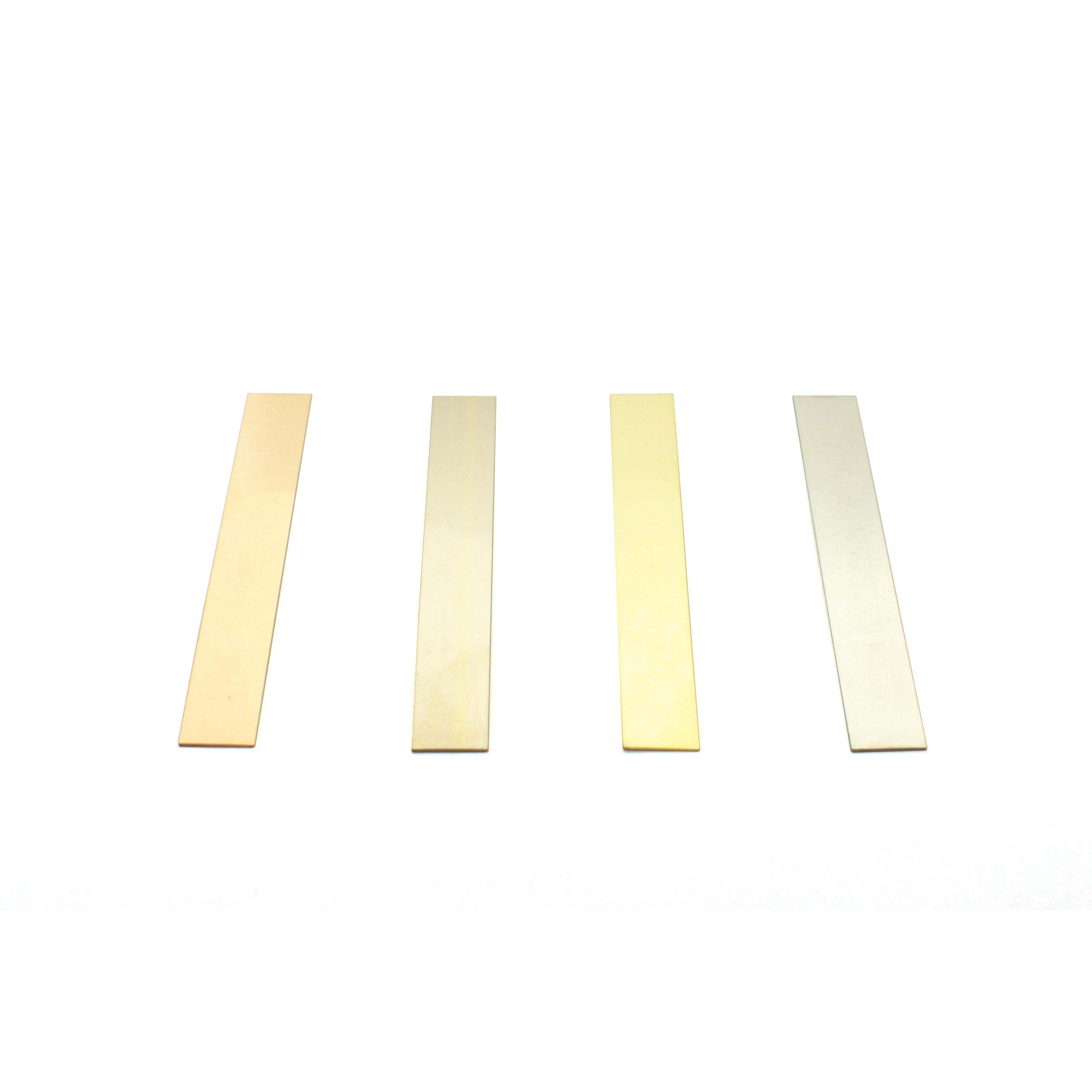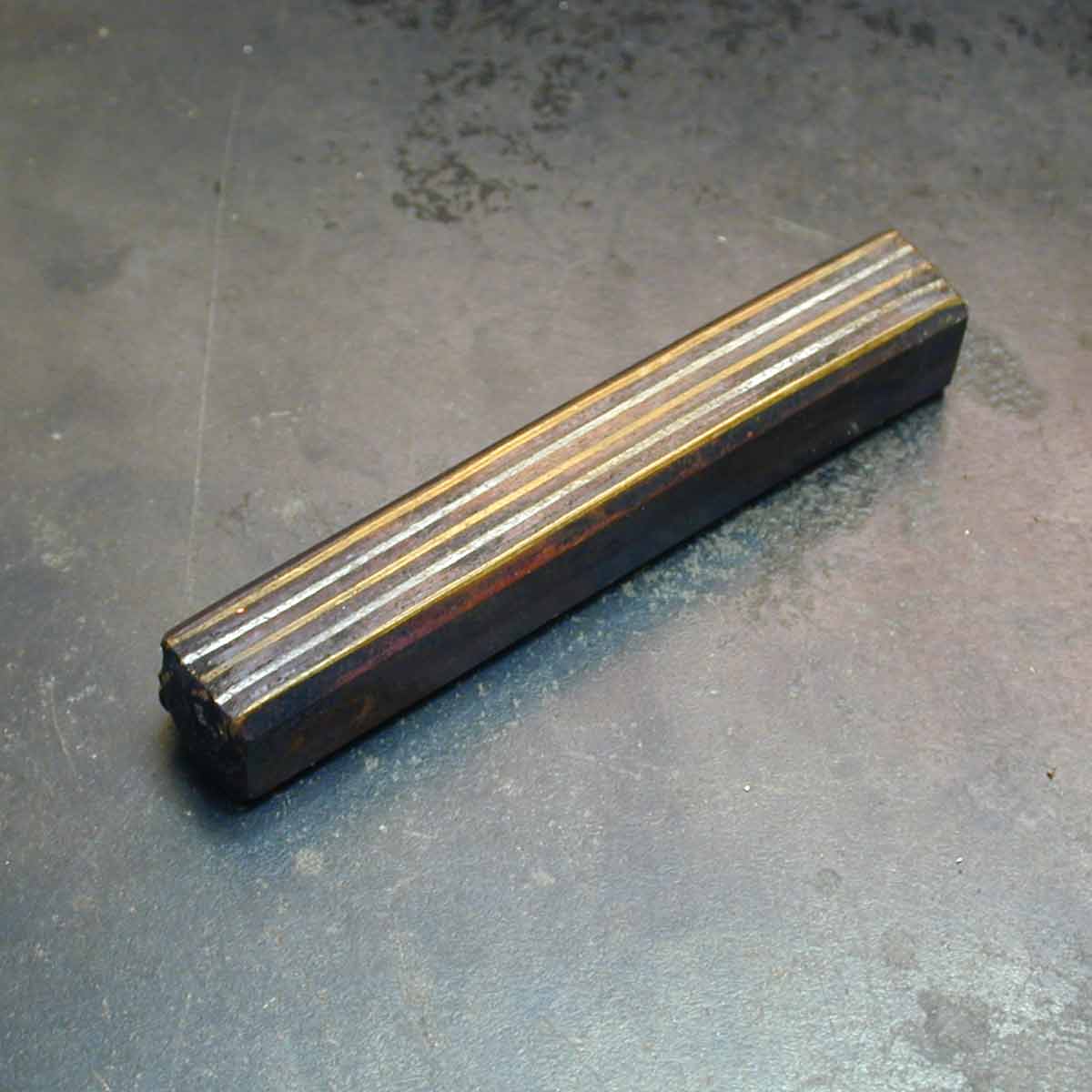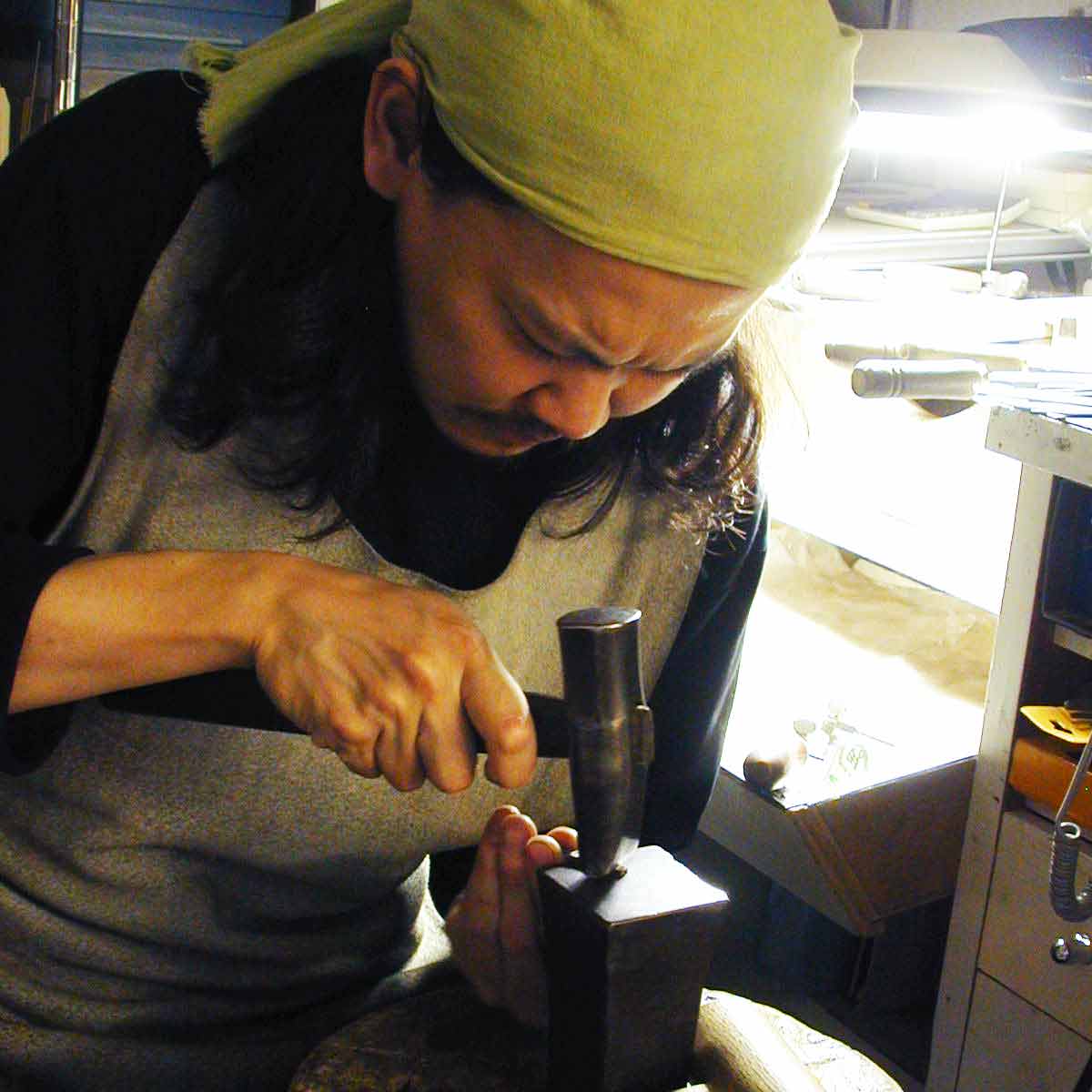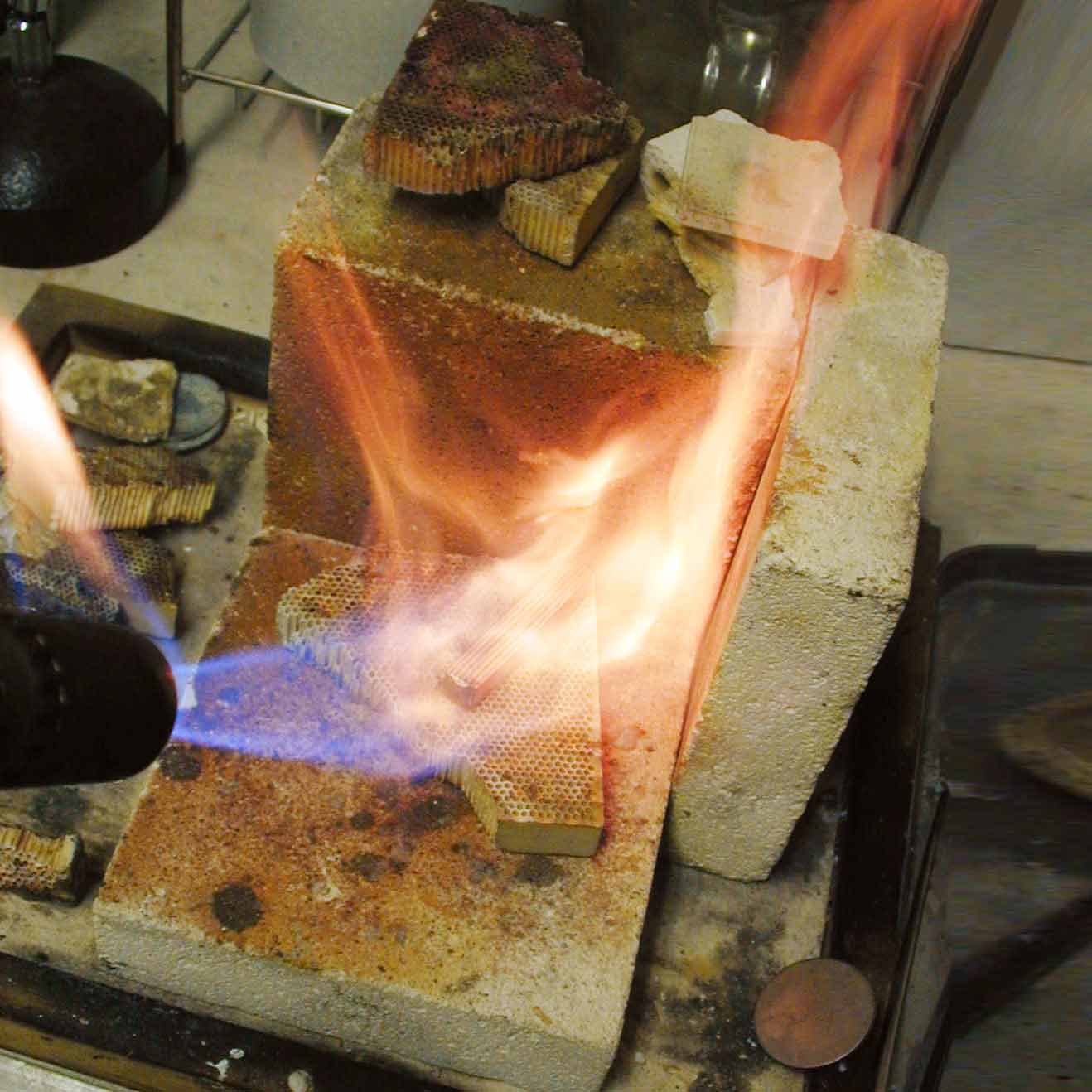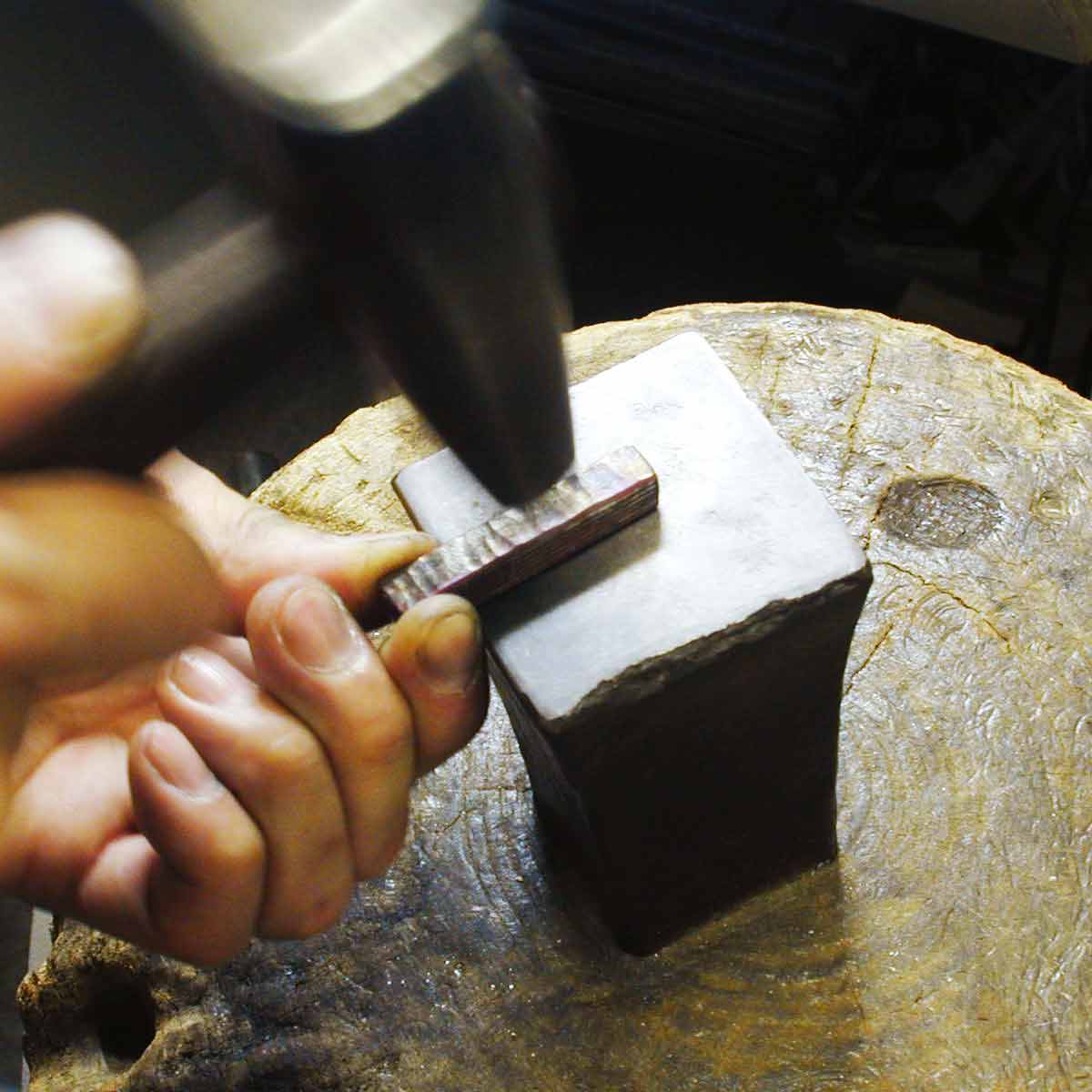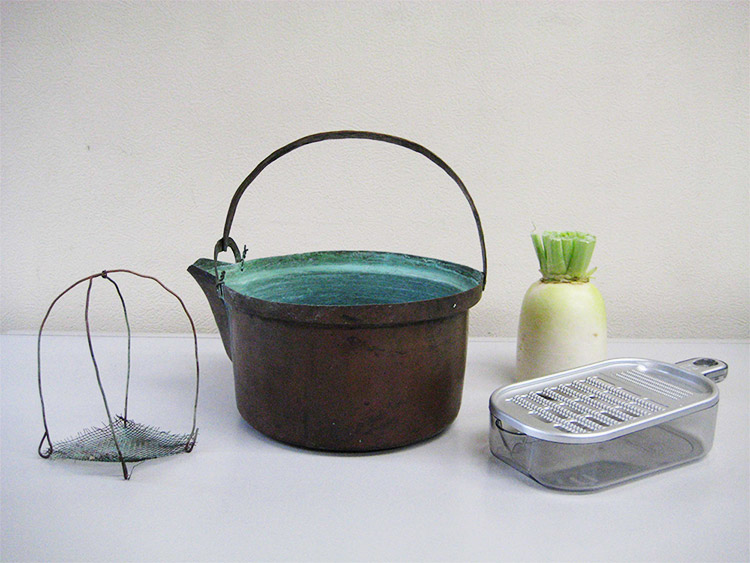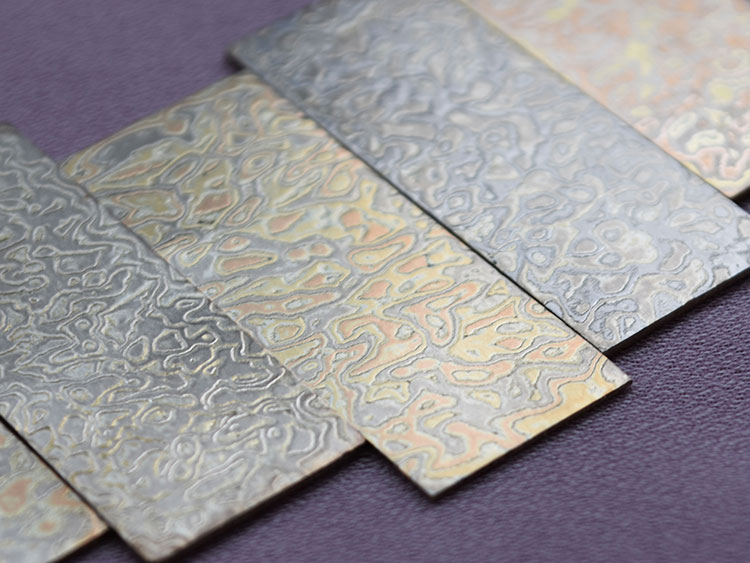
Technique Of Mokume Gane
ABOUT Mokume Gane
Mokume Gane is the name of a technique (and works) that are made using a unique Japanese metal crafting technique which consists of layering different-colored metals, and painstakingly carving and forging them to create beautiful wood grain patterns. The technique was developed about 400 years ago, at the beginning of the Edo period, by Shoami Denbei who was a craftsman making sword fittings in Dewa Akita (Dewa is the current Akita Prefecture).
Mokume Gane was also called “Tagayasan-Ji” for its patterns resembling the Tagayasan (Rosewood) wood grain. During the Meiji Era, it was also known as “Kasumi Uchi” (mist metalwork). The names Mokume Gane and mokume are also widely known around the world.
It is said that the roots of Mokume Gane go back to a guribori sword guard created at the beginning of the Edo period by that same Shoami Denbei of Dewa Akita.
Technique about Involved in Mokume Gane
